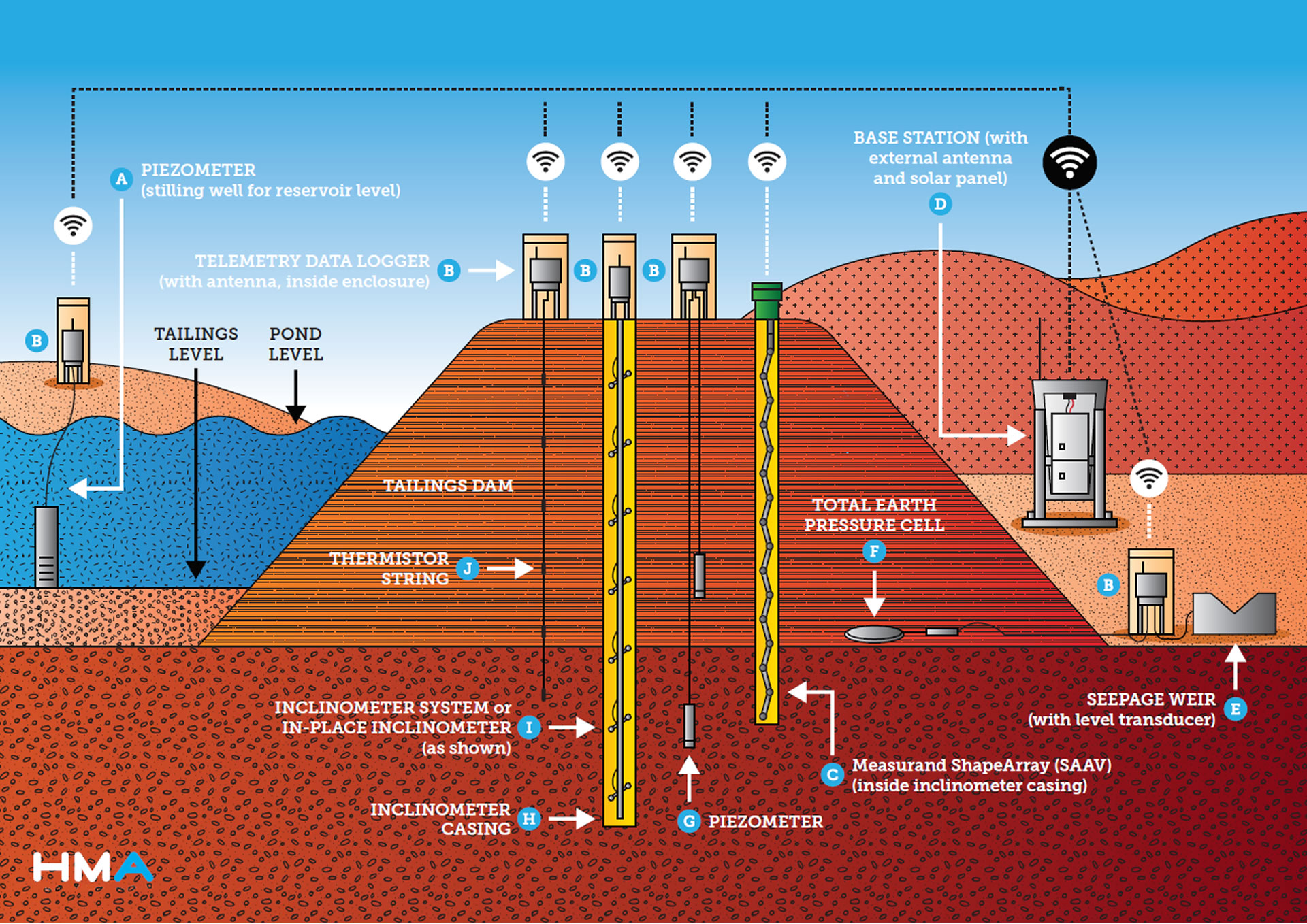
Tailings Dams are typically an earth fill embankment dam storing mine by-products generated during operations. Tailings can be liquid, solid or a slurry of fine particles and can be inert or toxic. Stability of these structures should be monitored to determine movement (vertical or horizontal), increases in pore water pressure, or seepage. Monitoring programs should be designed with the site-specific characteristics (e.g. foundation materials, dam materials, height, and construction style) and overall risks for the structure in mind.
Benefits of Monitoring Systems
- With an effective monitoring system in place, changes in geotechnical parameters such as ground movements and pore pressure can be detected through early warning monitoring systems. Early warnings allow mine owners to enact contingency plans to counteract the observed changes in parameters.
- Real-time monitoring systems allow engineers to access data immediately to allow for rapid decision making. Also, less effort spent on collecting data means more time spent on effectively interpreting and using the data collected.
- Monitoring instruments provide insight to key areas of concern such as:
- Ground displacement (settlement or lateral movement)
- Groundwater levels
- Seepage of dams
Monitoring Components
- Instrumentation, data acquisition and collection should be selected to suit site-specific conditions and stability concerns.
- Instrumentation installations should be designed to answer specific concerns in the structure, including the geotechnical parameter to monitor and the location to install the sensor.
- A variety of data acquisition options are available to meet site specific needs. These can range from manual to fully automated systems.
- HMA’s Engineers and Specialists can aid in selecting the right solutions for your site conditions.

